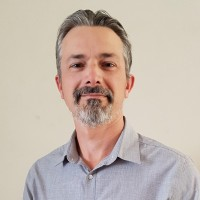Aeronautical Society of SA – Annual Conference
- Garth Calitz
- Jul 30, 2024
- 4 min read
By Rob Russell

The society recently held its annual conference, over three days, at the Protea Hotel, Technopark, Stellenbosch. It was a fitting venue, seeing so many of their members and organisations are based in the immediate area, or close by. Flightline Weekly was invited to attend the prestige event.

This unique annual event offers the delegates an opportunity to meet, discuss and learn from fellow innovators and network with other colleagues and partners, where all participants are actively contributing to aerospace innovation and its growth on the continent.


The conference was preceded by a Young Professional Network event, the main objective, being to encourage participation by younger engineers and students. It took place at the hotel on the day before the conference and was a great success. This annual event is organised by the Society, together with support from the Aerospace Industry Support Initiative, an initiative of the Department of Trade, Industry and Competition and was well supported by those in the area.

The Aerospace Industry Support Initiative is a government initiative with a specific aim of developing and improving the competitiveness of the local aeronautics, space, defence and sector-wide advanced manufacturing industries.

The Aeronautical Society of South Africa (AeSSA), was established in 1911 by one of the pioneering South African aviators, the late Rear-Admiral Sir John L. Weston. The AeSSA is a fully autonomous Voluntary Association affiliated as a Division of the Royal Aeronautical Society (RAeS) (UK).
The society welcomes membership across a broad spectrum, but consists mainly of:
• Engineers
• Test pilots
• Professional people, with a keen interest in Aeronautical Engineering
AeSSA is registered in South Africa with the Companies and Intellectual Property Commission (CIPC) as a Non-profit Company (NPC), with its Articles of Association, updated to currently reflect the original historical name “Aeronautical Society of South Africa”, from the previously named “Royal Aeronautical Society of South Africa” (RAeSSA) and its amalgamation with the “South African Institute for Aeronautical Engineers (SAIAeE)”, in October 2000.
In the international context, AeSSA is further registered as a Corporate Member of the International Council of Aeronautical Sciences (ICAS) and the International Society of Air Breathing Engines (ISABE).
The Society put together an impressive programme and there were some very interesting topics, delivered by experts in their specific fields.

After checking in and registering, the Conference opened on Wednesday, 24th July, with a welcoming address by the President of the Society, David Toma. David is a well-known commercial pilot, flying instructor and test pilot. He welcomed everyone and thanked the main sponsors, the Aerospace Industry Support Initiative, through the Department of Trade and Industry.

The First session continued, with the Key Note presentation. It was delivered by Lorita Christelis and Hans van der Merwe, from Dragonfly Aerospace. The topic dealt with evolving the SA Space industry from manufacturing hardware, namely satellites, to providing analytical ready-to-use data, through their own in-house operational control centre. Dragonfly is a local-based Company, situated within walking distance of the hotel.
They have a manufacturing facility, which features large clean sterile rooms as well as comprehensive test and development facilities. They follow an integrated approach, ensuring that they maintain in-house control of all satellite subsystems — a crucial element in a time where global supply chain management is under pressure and the ability to manage the obsolescence of components is essential. The primary aim of the Company is that its facilities will allow for the production of up to 48 satellites (200 kg) annually, enabling them to compete with the most advanced agile aerospace companies in the world.
This set the tone for the conference and was indicative of the standard of the Aerospace Industry in South Africa. Interestingly many of the Companies are located in the Stellenbosch and Greater Western Cape area.
The conference was well attended and it was very interesting to see so many young people there, both engineers and students, they came mainly from Stellenbosch University. This can only augur well for the industry. It was very evident that South Africa is well respected in the Industry and has produced not only some very talented and qualified personnel but many Companies are well respected throughout the world as well, in part due to the support and help from AISI.
The conference finished on Friday morning, with yet again some fascinating papers.
David Toma delivered a short talk on his career as a test pilot. It was fascinating to listen to how he found his passion for flying through his engineering qualifications, going into flying and becoming a commercial pilot and Grade 2 instructor. Taking these qualifications further he ventured into the field of test flying. As he mentioned it is not an easy path and with our CAA, having no in-house Flight Test crew or capability, it was very much a path hard trodden and with many pitfalls and self-learning. However, with his passion, he was able to get there and is now a well-respected test pilot.
The review of Swarming behaviour – the use of mass drones flying in formation, for you non-technical types – delivered by Mamokete Makhubo was truly fascinating and very interesting to listen to. Ms Mamokete is highly qualified in her field and indicative of the standard of engineers being produced in South Africa. She works for CSIR, who is also very much involved in the aeronautical industry within SA.
The conference ended on a high note and it was evident, that especially the younger engineers and students, not only being suitably qualified in their various fields, are passionate and were keen to improve on their qualifications and stay involved in the aerospace industry.
































Comments